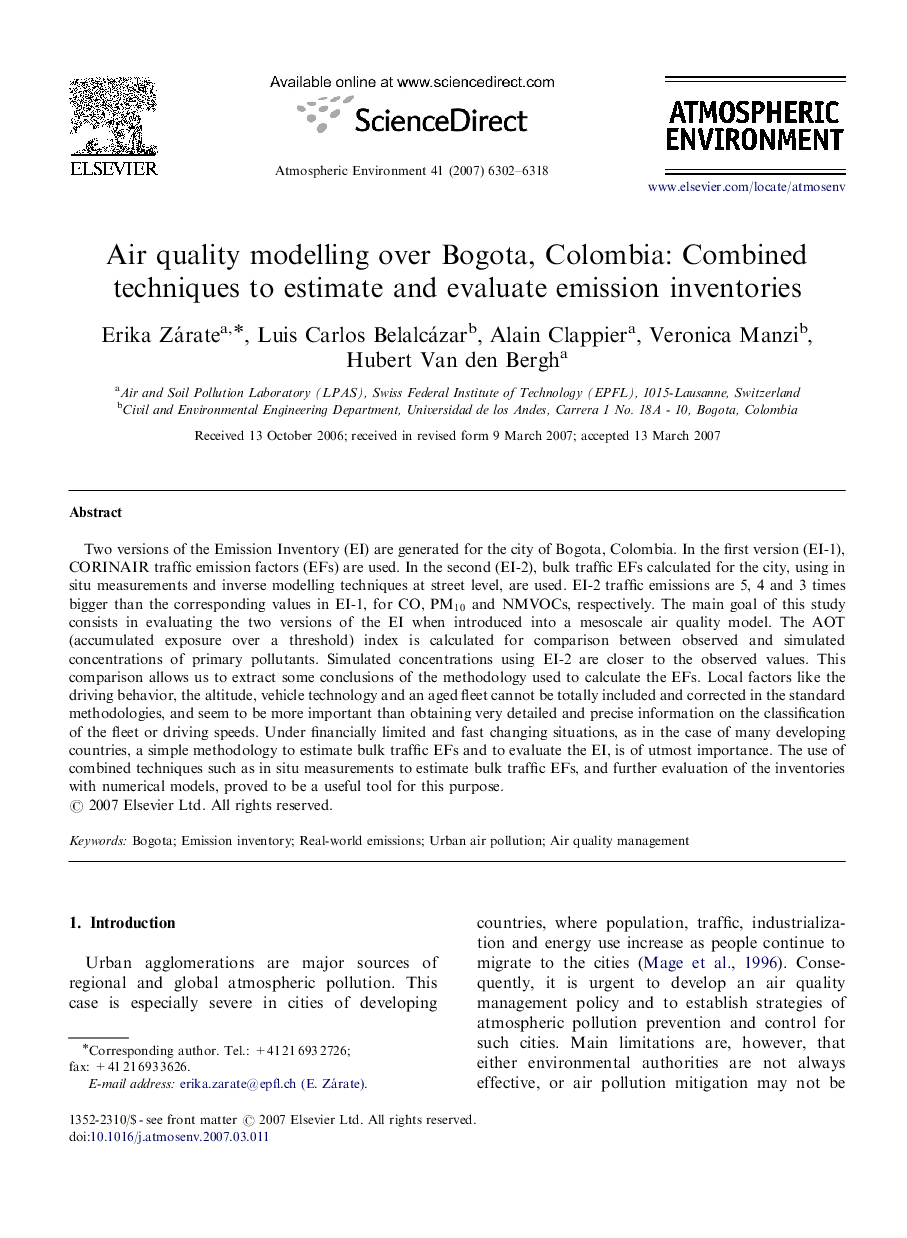| Article ID | Journal | Published Year | Pages | File Type |
|---|---|---|---|---|
| 4443369 | Atmospheric Environment | 2007 | 17 Pages |
Two versions of the Emission Inventory (EI) are generated for the city of Bogota, Colombia. In the first version (EI-1), CORINAIR traffic emission factors (EFs) are used. In the second (EI-2), bulk traffic EFs calculated for the city, using in situ measurements and inverse modelling techniques at street level, are used. EI-2 traffic emissions are 5, 4 and 3 times bigger than the corresponding values in EI-1, for CO, PM10PM10 and NMVOCs, respectively. The main goal of this study consists in evaluating the two versions of the EI when introduced into a mesoscale air quality model. The AOT (accumulated exposure over a threshold) index is calculated for comparison between observed and simulated concentrations of primary pollutants. Simulated concentrations using EI-2 are closer to the observed values. This comparison allows us to extract some conclusions of the methodology used to calculate the EFs. Local factors like the driving behavior, the altitude, vehicle technology and an aged fleet cannot be totally included and corrected in the standard methodologies, and seem to be more important than obtaining very detailed and precise information on the classification of the fleet or driving speeds. Under financially limited and fast changing situations, as in the case of many developing countries, a simple methodology to estimate bulk traffic EFs and to evaluate the EI, is of utmost importance. The use of combined techniques such as in situ measurements to estimate bulk traffic EFs, and further evaluation of the inventories with numerical models, proved to be a useful tool for this purpose.
